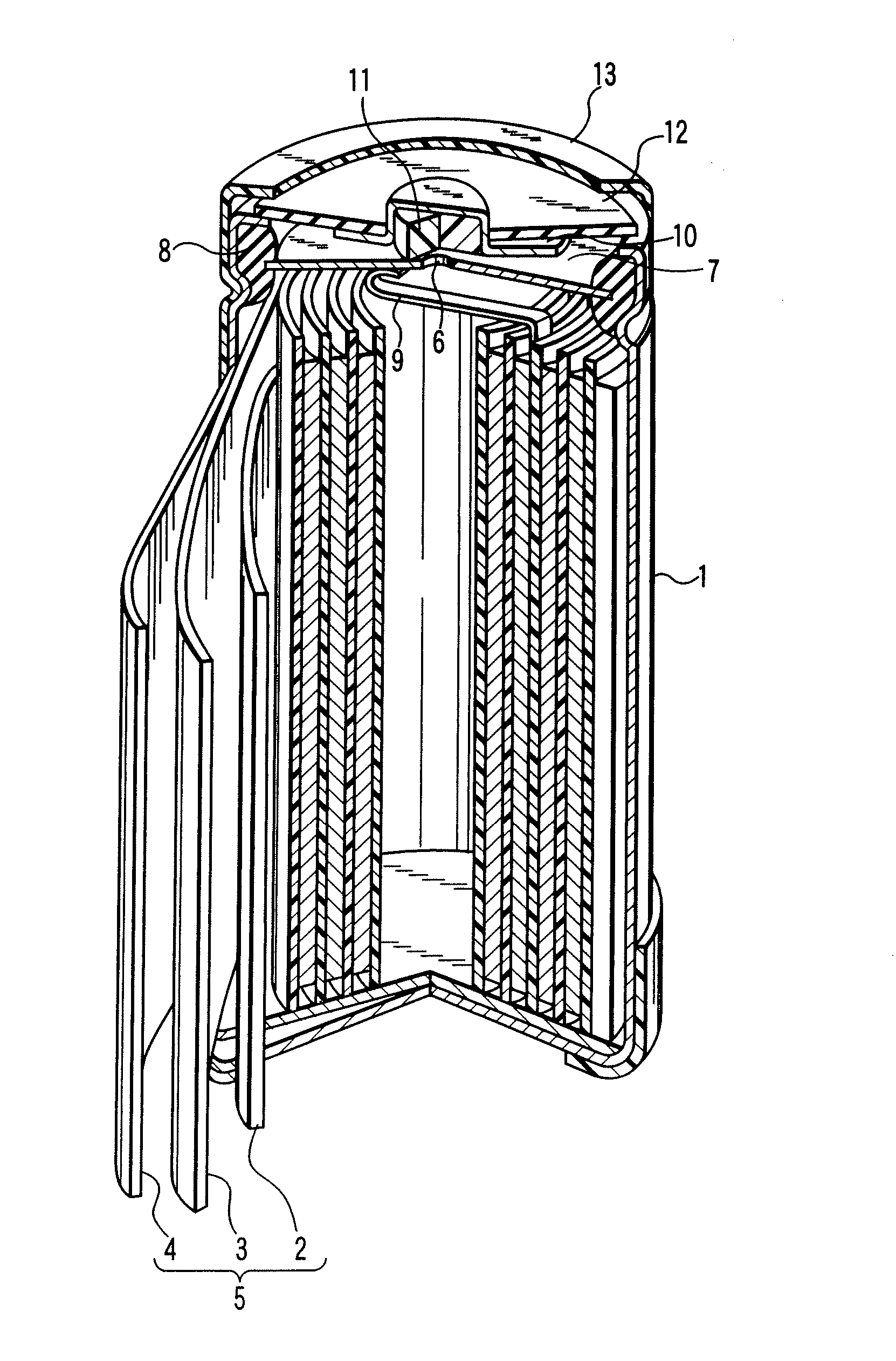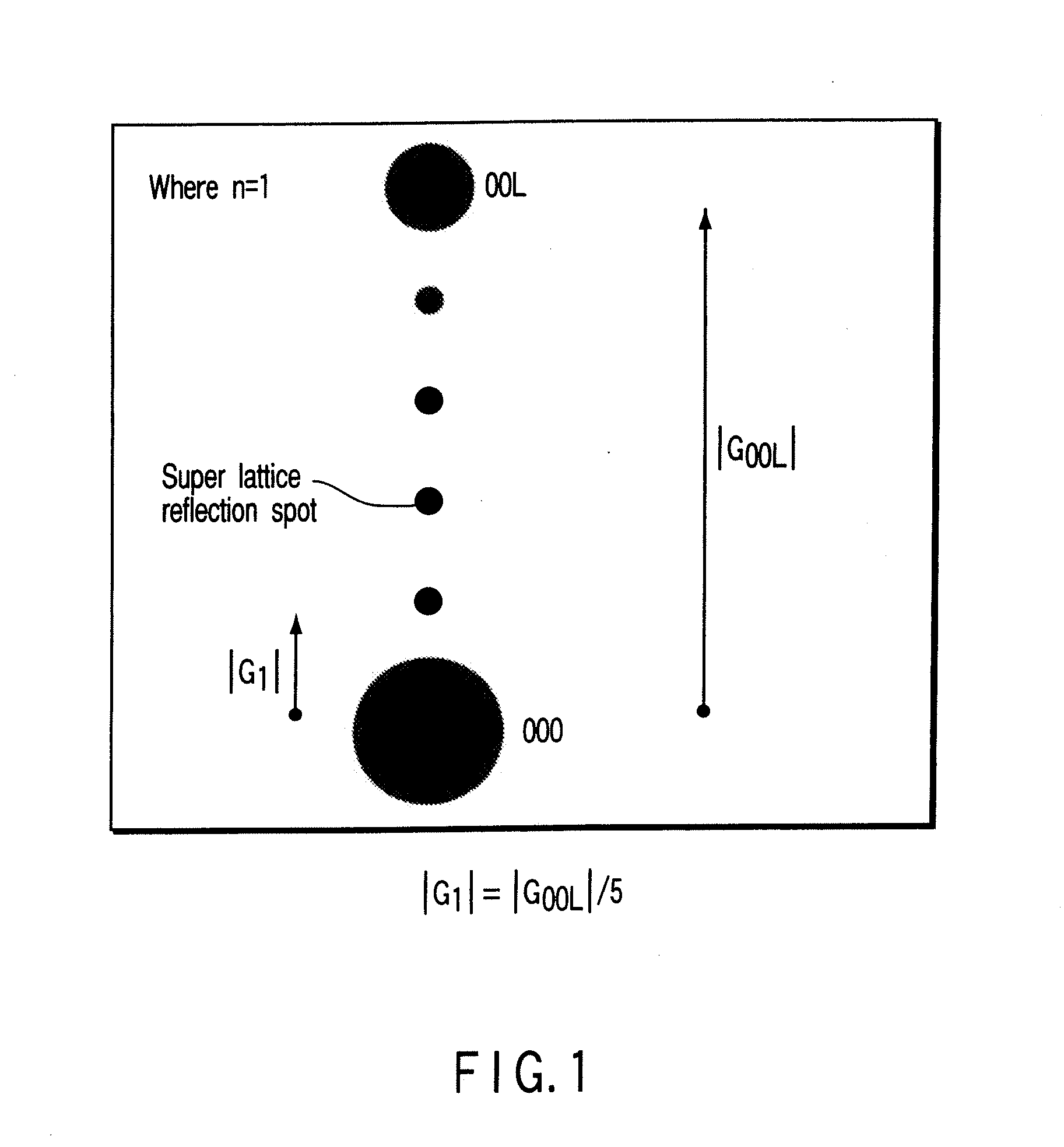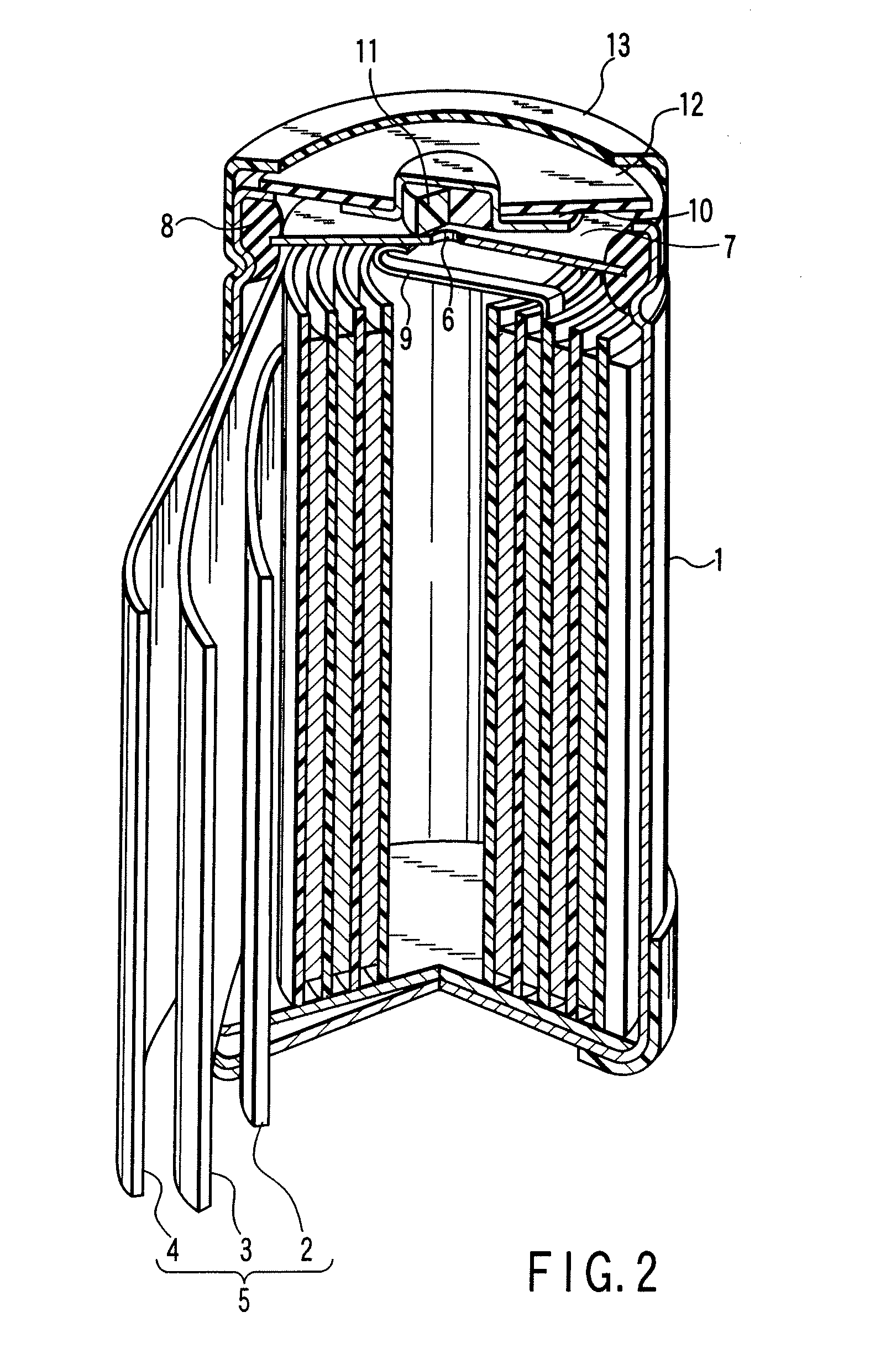Hydrogen absorbing alloy and secondary battery
a secondary battery and alloy technology, applied in the field of hydrogen absorbing alloy, can solve the problems of small hydrogen storage capacity, difficult to further increase the discharge capacity of a secondary battery, and difficult to desorb hydrogen, and achieve excellent charging-discharge cycle characteristics, excellent running performance, and high capacity
- Summary
- Abstract
- Description
- Claims
- Application Information
AI Technical Summary
Benefits of technology
Problems solved by technology
Method used
Image
Examples
examples 33 to 40
[0316] Hydrogen absorbing alloys were prepared by the high frequency induction melting method as described in the following.
[0317] (High Frequency Induction Melting Method)
[0318] Each of the elements constituting the composition shown in Table 6 was weighed, followed by melting the composition in a high frequency induction furnace under an argon gas atmosphere so as to obtain an alloy ingot. Then, a heat treatment was applied to the alloy ingot thus obtained under an argon gas atmosphere and under the conditions shown in Table 6 so as to obtain hydrogen absorbing alloys for Examples 33 to 40.
[0319] A cylindrical nickel hydrogen secondary battery was assembled as in Example 1 by using each of the hydrogen absorbing alloys thus prepared.
[0320] The secondary battery prepared in each of Examples 33 to 40 was left to stand under room temperature for 36 hours. Then, each of the discharge capacity and the charge-discharge cycle life of the secondary battery were measured as in Example ...
examples 73 to 80
[0375] Hydrogen absorbing alloys were prepared by the high frequency induction melting method as described in the following.
[0376] (High Frequency Induction Melting Method)
[0377] Each of the elements constituting the composition shown in Table 13 was weighed, followed by melting the composition in a high frequency induction furnace under an argon gas atmosphere so as to obtain an alloy ingot. Then, a heat treatment was applied to the alloy ingot thus obtained under an argon gas atmosphere and under the conditions shown in Table 13 so as to obtain hydrogen absorbing alloys for Examples 73 to 80.
[0378] A cylindrical nickel hydrogen secondary battery was assembled as in Example 41 by using each of the hydrogen absorbing alloys thus prepared.
[0379] The secondary battery prepared in each of Examples 73 to 80 was left to stand under room temperature for 24 hours. Then, each of the discharge capacity and the charge-discharge cycle life of the secondary battery were measured as in Examp...
examples 113 to 120
[0435] Hydrogen absorbing alloys were prepared by the high frequency induction melting method as described in the following.
[0436] (High Frequency Induction Melting Method)
[0437] Each of the elements constituting the composition shown in Table 20 was weighed, followed by melting the composition in a high frequency induction furnace under an argon gas atmosphere so as to obtain an alloy ingot. Then, a heat treatment was applied to the alloy ingot thus obtained under an argon gas atmosphere and under the conditions shown in Table 20 so as to obtain hydrogen absorbing alloys for Examples 113 to 120.
[0438] A nickel rectangular hydrogen secondary battery was assembled as in Example 81 by using each of the hydrogen absorbing alloys thus prepared.
[0439] The secondary battery prepared in each of Examples 113 to 120 was left to stand under room temperature for 72 hours. Then, each of the discharge capacity and the charge-discharge cycle life of the secondary battery were measured as in E...
PUM
| Property | Measurement | Unit |
|---|---|---|
| volume ratio | aaaaa | aaaaa |
| volume ratio | aaaaa | aaaaa |
| volume ratio | aaaaa | aaaaa |
Abstract
Description
Claims
Application Information
 Login to View More
Login to View More - R&D
- Intellectual Property
- Life Sciences
- Materials
- Tech Scout
- Unparalleled Data Quality
- Higher Quality Content
- 60% Fewer Hallucinations
Browse by: Latest US Patents, China's latest patents, Technical Efficacy Thesaurus, Application Domain, Technology Topic, Popular Technical Reports.
© 2025 PatSnap. All rights reserved.Legal|Privacy policy|Modern Slavery Act Transparency Statement|Sitemap|About US| Contact US: help@patsnap.com



